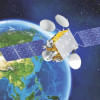Our own space odyssey

Bangabandhu Satellite-1 (BS-1) is considered as a stepping stone for Bangladesh in the digital era. With the successful launch and positioning in orbit, this is a formal journey towards the space-age for this nascent country that became independent only 47 years back. Most of you already know about the mission, the timeline and the nitty-gritty details of the satellite. So in this issue of Bytes we will try to shed some light on the underlying technology of this entire mission:

The Delivery
Let's go to the basics first: a mission is divided in to two parts: the payload and the delivery. The delivery is basically, how the payload is being sent to the space. Right now, there are only a handful ways to send a payload to space. Roscosmos, the Russian Space Agency and NASA, the American Space Agencies were pioneers of making the delivery but there are several other players in the market now. Since the discontinuation of Space Shuttle Program by NASA in 2011, Soyuz by Roscosmos is the only manned delivery method available to transport astronauts to the International Space Station. On behalf of Bangladesh, BTRC awarded the satellite contract to European satellite manufacturer Thales Alenia Space who out-bid Boeing, Orbital ATK, MDA Corporation and China Great Wall Industry Corporation in 2015 for a contract to construct the satellite, build ground infrastructure for the operation, training of resources and provisioning of a launch vehicle for $248 million. The initial delivery vehicle of Bangabandhu 1 was supposed to be Arianespace's Ariane 5 rocket. But it had a long queue time and Bangladesh wanted to put up the satellite on December 16, 2017. But due to several technical delays the final launch happened on May 12, 2018 (GMT+6) from the historic Complex 39A at NASA's Kennedy Space Centre. SpaceX, a commercial space delivery startup owned by Elon Musk, using their Falcon 9 Block 5, the most high-tech rocket, embarked upon a journey that will be retold by generations to come in Bangladesh.
A bit more about the delivery vehicle, With the Block 5 Falcon 9, SpaceX wants to reuse the launch vehicle at least around 10 times with the same first stage without any refurbishment. And with refurbishments, this rocket can be reused for up to 100 more missions. This re-use concept has reduced the cost of payload delivery dramatically, saving at least $38 million per mission.
The stage 1 vehicle comes back nearly eight minutes of the launch and landed back on earth. A droneship of SpaceX in Atlantic called 'Of Course I Still Love You' was the landing ground of the stage 1 vehicle. Later it was returned for a detailed inspection to ensure the vehicle can enter service for future delivery.

The Payload
The payload is basically the cargo that will go into space. In most cases, these are satellites, supplies for the international space station or even probes for interstellar testing. In this mission, the cargo was Bangabandhu Satellite-1 (BS-1), a geostationary communication satellite. Modelled after the new-generation Spacebus 4000B2 platform from Thales Alenia Space, the geostationary satellite comes equipped with 26 Ku-band and 14 C-band transponders. The satellite will be covering Bangladesh and its neighbouring region. Stationed at 119.1° East, the system will provide Ku-band coverage for Bangladesh and its territorial waters in the Bay of Bengal, India, Nepal, Bhutan, Sri Lanka, the Philippines and Indonesia while providing C-band support to the entire region.
What purpose will it serve
The priority operation of BS-1 would be: Direct to Home (DTH) service for TV channels, VSAT, backhaul and trunking, network restoration, disaster preparedness and relief. As of now, Bangladesh rents all of these services from satellite service provides in the region. It nearly costs around $14 million per year. Now Bangladesh can save the amount and rent out the excess capacity to the other countries in the region and earn up to $50 million per year.









Comments